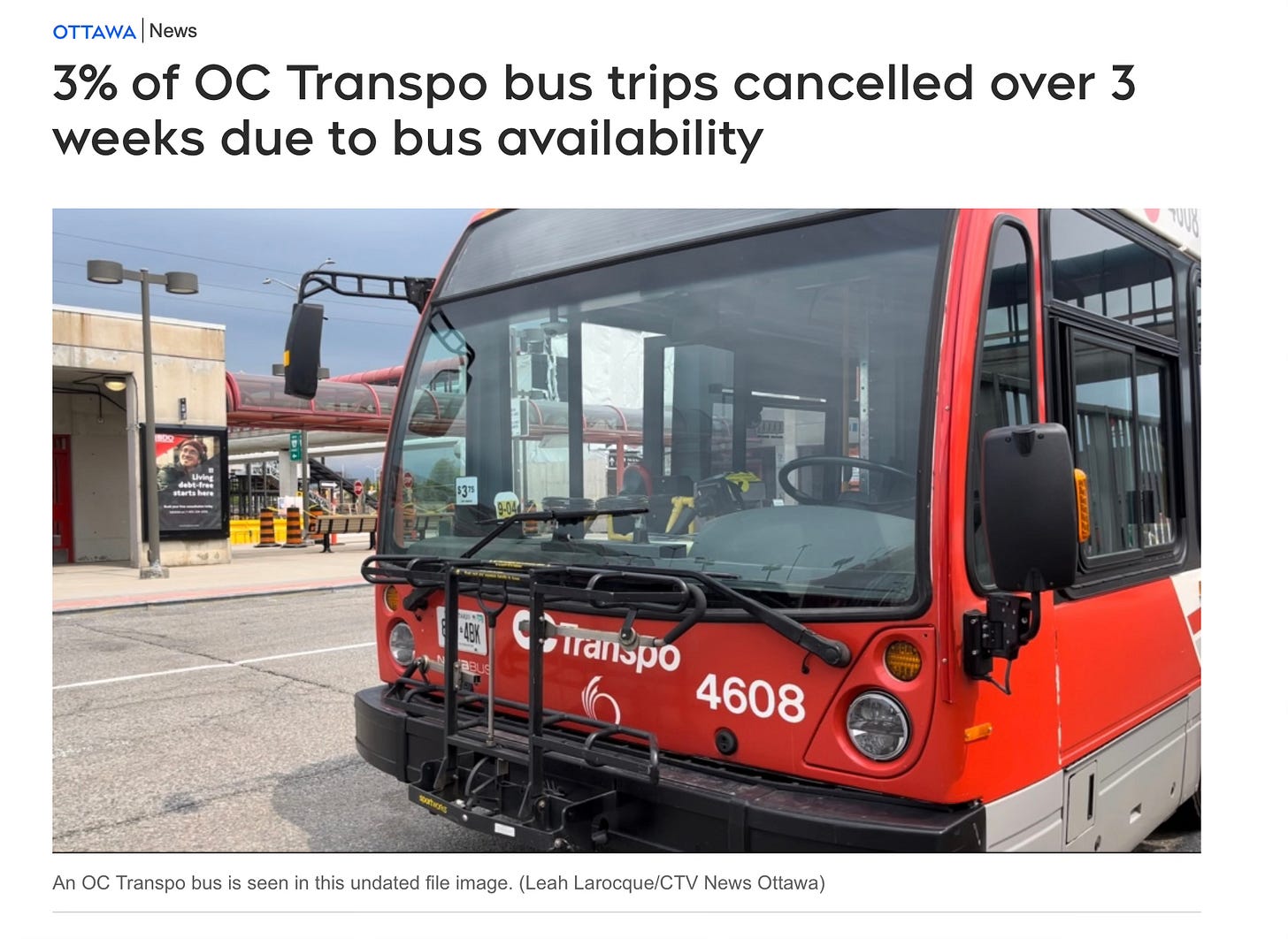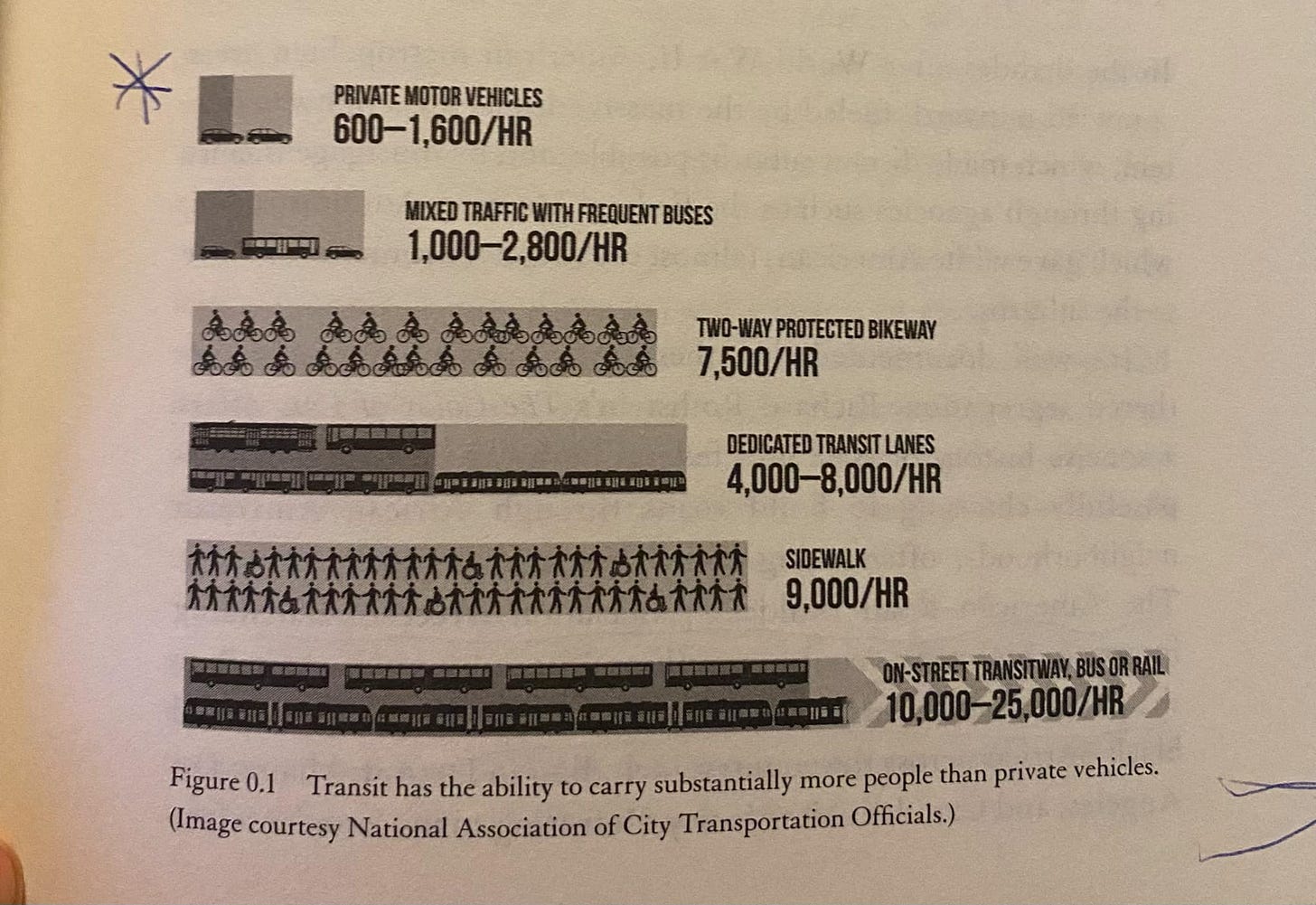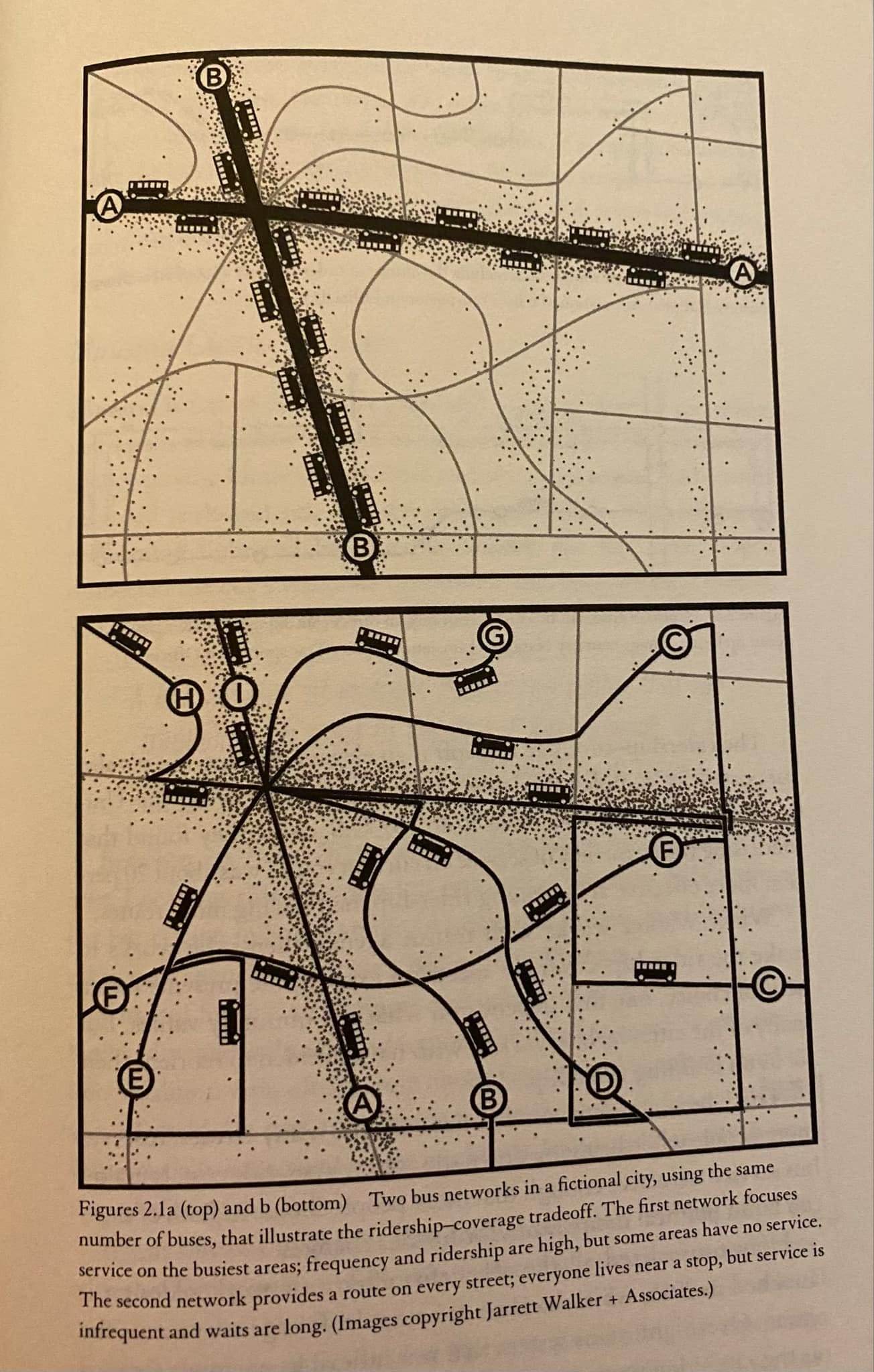If there’s one book from the Book Club you read, I’d recommend Better Buses Better Cities. So much of this book was relevant to Ottawa, this list only covers a fraction of the great ideas shared in the book. I found myself highlighting nearly every second page.
The Ottawa Urbanism Book Club will be discussing the book on November 25 at 6:15pm at Sunnyside Public Library. Reading is optional, books are available at perfect books.
Here are 5 things Ottawa can learn from Better Buses Better Cities: How to Plan, Run and Win the Fight for Effective Transit:
Buses can move people fast
This is the #1 lesson Ottawa can and should take from this book.
With downtown densifying, workers returning to the office, and drivers stuck in traffic, the bus is a great way to move people around faster and more efficiently.
If we continually push everyone towards driving, traffic will only get worse and travel times can be expected to increase.
Of course, the bus needs to be done right. This means doing things like increasing frequency and reducing delays on high ridership routes, and ensuring that the system has enough spare buses and maintenance staff to mitigate cancellations.
Focus on what riders care about
There are seven basic criteria outlined by Steven Higashide for useful transit service:
The service goes where you want to go.
The service runs frequently enough that you don’t have to think about it.
The service is reasonably fast.
The service is reliable (you don’t have to worry about major delays).
You can conveniently walk from the service to your final destination.
The service is comfortable and feels safe.
The service is affordable.
Ottawa has a lot of issues, but above all it needs to work on reliability. Many people will simply not choose to bus if there’s a reasonable chance that the bus won’t show up, or that the bus will be so late it’ll miss its connection. On October 29, OC Transpo had 414 trip cancellations of 8,210 planned trips, a dismal cancellation rate of 5%, and this isn’t even counting late buses.

On top of improving reliability, Ottawa really needs to speed up service, and with the current budget review we need to ensure that fare prices don’t become unaffordable.
Speed up the bus in smaller ways
Making the bus faster is a great way to entice people away from driving and onto transit.
Of course there’s the obvious answer like bus lanes, but there’s other smaller and more affordable ways to speed up the bus like removing frequent or underused stops or installing bus signal priority at traffic lights.
In New York City, installing signal priority on bus routes has cut end-to-end run times by as much as 19 per cent (link opens a PDF).
Ottawa already uses signal priority in select spots, but not nearly as much as they should. I’d like to see more transit priority signals used downtown, where ridership is high and buses are often stuck in traffic.
In terms of removing stops, Bank Street would be a great candidate for this. The 6 seems to have a stop every couple blocks throughout Centretown, when it’d be much quicker if a couple of them were removed. Of course, any stop removals need to be made by reviewing data and consulting with the community.
The ridership/coverage tradeoff
Ottawa is gigantic, and this means they have a huge and sprawling area that needs to be served by transit. This is very difficult and expensive to do. It leads to many buses with indirect and squiggly routes, low ridership, and a high cost to run. It’s generally much more affordable and faster to run straighter and more direct routes, closer to where a high number of riders are. By prioritizing direct and high ridership routes, buses come much more frequently, transfers take less time, and in theory the service costs less to run and brings in more money.
One thing Ottawa is doing is getting rid of many of their 200 series routes. These are typically lower ridership routes that service low density areas, and drive into side streets and such. I used to take the 290 to Carleton, which stopped directly in front of my house instead of a 10 minute walk to the 90. These routes are a luxury, and in a cash strapped environment it can be very difficult to run them.
However, if Ottawa is going to be cutting long and windy routes, they should be investing in more high ridership and (somewhat) direct routes, like the 6 on Bank Street or the 88 on Baseline. Simply cutting routes for the sake of cutting routes will lead to reduced ridership and a worse service overall.
Raising fares can reduce ridership
This is something Ottawa badly needs to keep in mind during budget 2025. According to the Victoria Transport Policy Institute, for every 10 per cent increase in transit fares, expect a ridership drop of 2 to 5 per cent.
While there are accessibility and equitable benefits to keeping transit fares low, Ottawa also needs to ensure that they are not reducing revenues by raising prices, which considering Ottawa’s already big ridership drop and the decrease in bus service hours, is a very real possibility.
Thank for reading, and please consider joining the Ottawa Urbanism Book Club on November 25. Reading is optional!










A proper public transit can be done. There are lots of cities that have been doing this well for years. Our mayor and much of the council do not seem interested. This is not really an issue for the rural and suburban voters that they represent. Real Ottawa City councillors do care, but they have been outnumbered since amalgamation. So, how does one really sell this idea to those who live outside the city?
That 10 minute walk for a mobility-challenged person or a person with a baby in a stroller and a small child in bad weather can be too hard. In the low-use areas maybe a small shuttle winding around areas on certain days (Thursday for shopping specials and another day?) to a good connecting transfer to shopping centres or transit station would encourage transit use and be a real service.